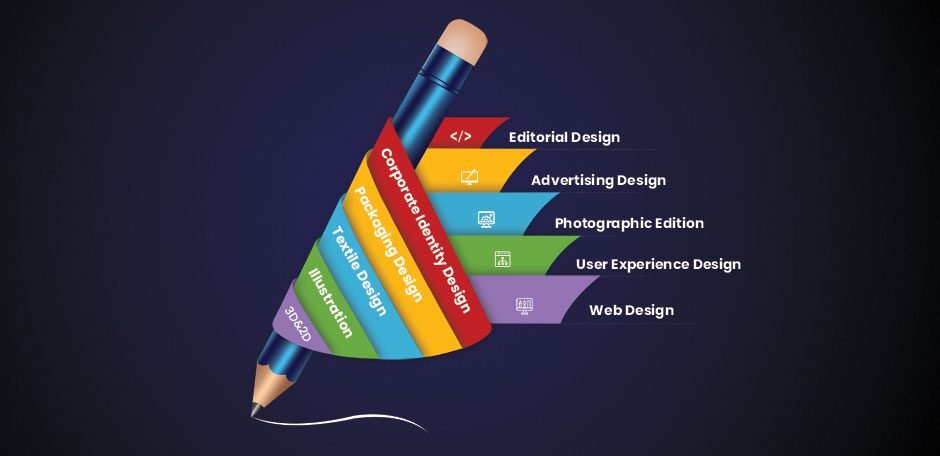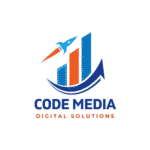
What is Graphic Design?
Graphic design is the art and practice of visually communicating ideas and messages through text, images, and other visual elements. It combines creativity, technology, and problem-solving to convey messages in an aesthetically pleasing and effective manner. Graphic designers use various tools and techniques to create visual content, such as logos, advertisements, websites, packaging, posters, and more.
In essence, graphic design is all about visual storytelling—taking complex information or ideas and simplifying them into visually engaging formats that are easy for the audience to understand.
Uses of Graphic Design
Graphic design plays a vital role in various industries and applications. Some of its most common uses include:
- Branding & Identity:
- Graphic design is crucial in creating and maintaining a company’s brand identity, which includes logos, color schemes, fonts, and visual styles. A strong visual identity helps establish a company’s recognition in the market.
- Examples: Logos for businesses like Nike, Apple, and McDonald’s.
- Advertising & Marketing:
- Graphic design is used to create impactful advertisements, banners, and promotional materials. These visuals attract attention, communicate the benefits of a product or service, and persuade customers to take action.
- Examples: Print ads, digital banners, social media ads, flyers, and brochures.
- Web & Mobile Design:
- Graphic designers create visually appealing websites and mobile apps. They focus on the layout, user interface (UI), and user experience (UX), ensuring the design is both functional and attractive to users.
- Examples: Website homepages, mobile app interfaces, and e-commerce pages.
- Product Packaging:
- Packaging design is crucial for making products stand out on the shelves. Graphic designers use creativity to design labels, packaging boxes, and wrapping that are visually striking and align with the product’s branding.
- Examples: Food packaging, cosmetics boxes, and electronics packaging.
- Print Media:
- Graphic design plays an important role in print media such as newspapers, magazines, posters, business cards, and flyers. These designs must be eye-catching while being easy to read and informative.
- Examples: Magazines, newspapers, event posters, business cards.
- Social Media Graphics:
- Social media platforms require engaging content to catch users’ attention. Graphic designers create posts, stories, infographics, and visual content that communicate key messages and engage the audience.
- Examples: Social media posts, banners, stories, and infographics.
- Motion Graphics & Animation:
- In digital marketing and entertainment, graphic designers create motion graphics and animations for videos, websites, and apps. These dynamic visuals help bring content to life and make it more engaging.
- Examples: Animated advertisements, explainer videos, and social media animations.
How Can One Benefit from Graphic Design?
- For Businesses:
- Increased Brand Recognition: Good graphic design helps businesses establish a strong, memorable identity. When logos, packaging, and marketing materials are consistent, they become instantly recognizable.
- Attracting Customers: Attractive and well-designed advertisements, websites, and social media posts are more likely to grab the attention of potential customers, leading to increased sales and engagement.
- Professionalism & Credibility: Quality design helps portray a professional image, which builds trust and credibility with customers. A well-designed website or marketing material can make a business appear more reputable and reliable.
- Effective Communication: Graphic design helps communicate complex messages simply and visually. It makes information more digestible and engaging for the audience.
- For Individuals/Creatives:
- Personal Branding: Individuals, especially those in creative fields, can benefit from graphic design by developing a strong personal brand. This could include designing a professional logo, portfolio, or social media presence.
- Creative Expression: Graphic design provides a platform for personal creativity. Whether you’re designing for a personal project or as a hobby, it can be a rewarding way to express your ideas visually.
- Career Opportunities: For those interested in a career in graphic design, there are many job opportunities in industries such as advertising, web design, print media, UX/UI design, and even freelance work. By mastering design tools and principles, individuals can open doors to a wide range of professional opportunities.
- Improving Communication Skills: Learning graphic design sharpens one’s ability to communicate ideas effectively. Visual design skills are a valuable asset in many professions, helping individuals convey their message clearly through visual means.
- For Education & Learning:
- Educational Materials: Graphic design can improve learning experiences by making educational materials (textbooks, online courses, e-learning interfaces) more engaging and easier to understand. Visual aids like infographics, diagrams, and charts enhance the retention of information.
- Visual Storytelling: Graphic design is an essential part of storytelling. In movies, presentations, and multimedia content, it helps convey emotions, actions, and information visually, making the message more impactful and memorable.
Conclusion
Graphic design is an indispensable tool in today’s visual-centric world. It plays a vital role in branding, marketing, web design, and communication, and its benefits can extend to both businesses and individuals. For businesses, effective graphic design can drive sales, enhance brand identity, and improve communication with customers. For individuals, it offers opportunities for creative expression, personal branding, and career development.
Whether you’re a business owner or a budding designer, understanding the power of graphic design can provide a valuable edge in both professional and personal contexts. By learning and implementing solid design principles, you can create visually appealing and meaningful content that communicates your message with impact.
